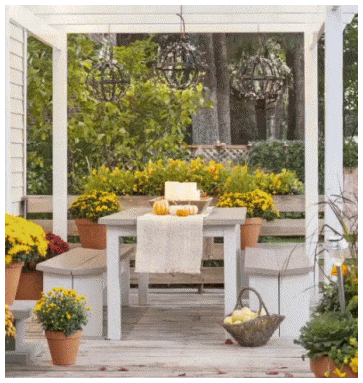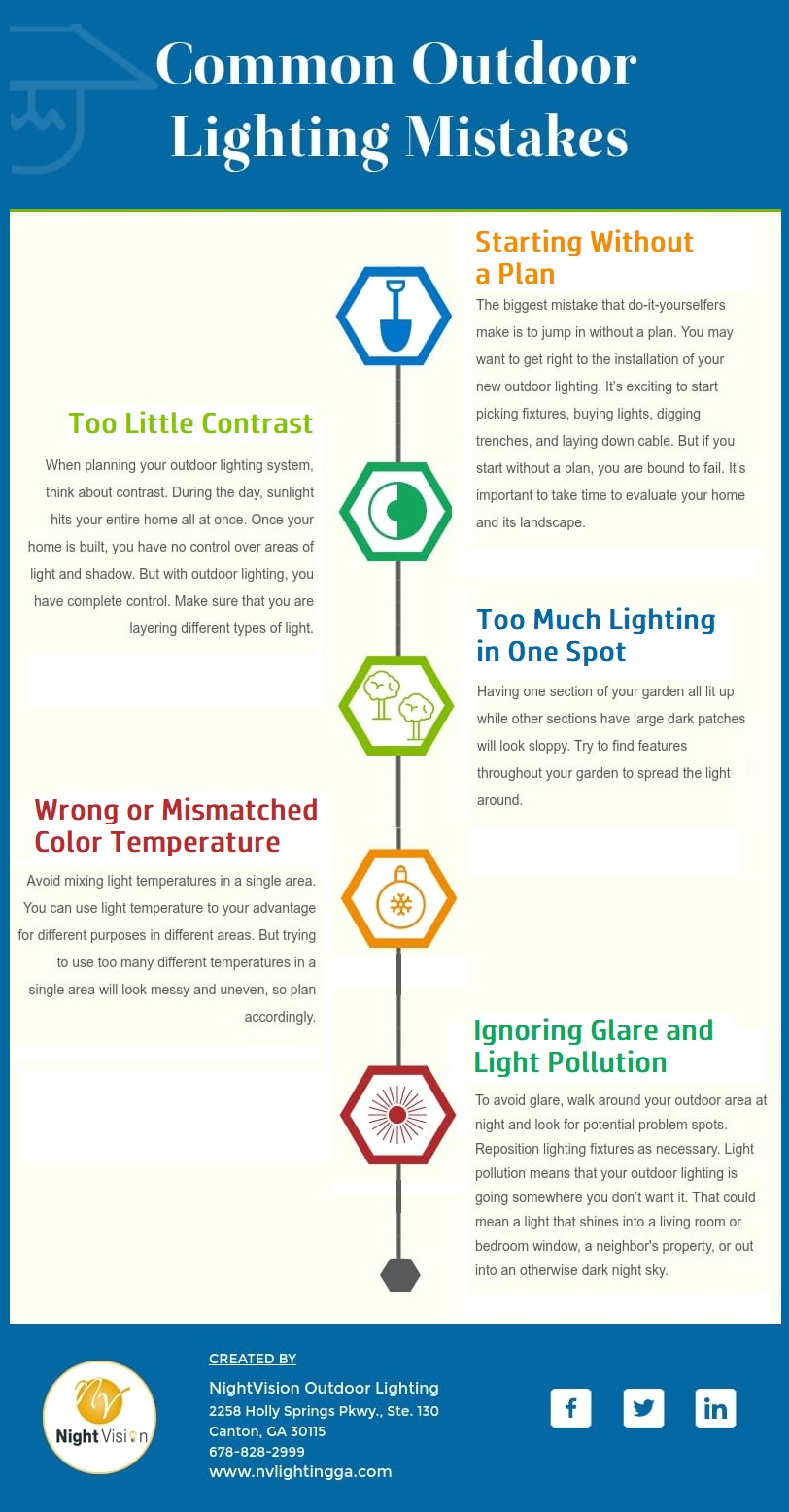How to Avoid Installation Missteps
Do you offer landscape lighting in your menu of services?
If so, we’re here to help you avoid five common mistakes when installing outdoor lighting systems. Let’s get started!
Mistake #1: Designing with Fixtures Instead of Light
There are a lot of impressive fixtures on the market, and homeowners can easily get carried away trying to incorporate them into their landscapes. But, make sure you’re designing with light and not fixtures.
Decide with the homeowners where they want to have light before you determine which fixture is best for creating the desired effect. Once your customers decide what they want to see and experience at night, you can help them make that vision a reality.
If you’re not designing with light, it’s too easy to use a particular fixture in ways it was never intended. For instance, path lights look great when they’re the right size and properly placed along a walkway. But they look out of place in a flowerbed far from any path.
Focus on the light, not the fixture.
Mistake #2: Using Poor-Quality Fixtures
Outdoor lighting fixtures are made with a number of different materials, most commonly aluminum, composite, copper, stainless steel, and brass.

Getting Into the
Lighting Business
Irrigation and landscape contractors are increasingly expanding their services to include outdoor lighting.
If your business is ready to “switch up,” you’ll want to take some training courses before performing jobs for homeowners. Although no special license or certification is needed, about six to 10 hours of class time should provide you with a basic knowledge of outdoor lighting.
Training is available through your irrigation distributor and lighting vendors such as Kichler, FX Luminaire, and Alliance.
Cast aluminum and composite are less expensive, but they’re lower-quality materials. Over time, it can oxidize, and the paint will fade considerably. (Powder coating can help extend the life of the fixture, but UV rays will cause it to discolor, chip, or peel.) Likewise, composite fixtures will begin to degrade after relatively short exposure to the outdoor elements.
Stainless steel is durable and perfect for a more modern look, but it must be kept clean to prevent corrosion. Dirt, sand, and other materials can compromise its protective layer of chromium oxide.
Brass and copper are both naturally resistant to corrosion. (They will slowly patinate when exposed to the elements, but they will not corrode.) Brass and copper are more expensive, but they’re also the most durable metals. Several manufacturers offer extended warranties on their brass and copper products.
Also be sure to use thicker-gauge wires with waterproof connections and outdoor-rated LED bulbs for a robust lighting system.
Mistake #3: Blinding the Viewer
If you’ve ever been momentarily blinded by lighting while walking along a pathway or around a pool, you know how annoying it can be. This common lighting mistake is easily avoidable. Never install fixtures in a way that exposes the light source to the eye. The resulting direct glare causes visual discomfort and can obscure the viewer’s vision
Always use glare shields on spotlights and flood lights, and position the fixture in a way that allows the shield to block the light source from viewers’ eyes.
—Article Continues Below—

Mistake #4: Over-Illuminating
There are two causes of over-illumination: high bulb wattages (e.g., using a 50-watt halogen when a 20-watt would be visually more appealing) and too many fixtures positioned close together. (See sidebar, “Ditch the Runway.”)

Ditch the Runway
To avoid over-illumination on pathways, the experts at Volt Lighting recommend positioning path lights in a zigzag pattern.
Alternating the fixtures from one side to the other, instead of lining them up on both sides, offsets the “airport runway” effect and creates a more aesthetically pleasing landscape.
Also, for curved paths, be sure to position the lights so they follow the curve.
An adequately illuminated residence increases security, but the outdoor lighting installer must always consider the customers’ neighbors and be aware of relevant light pollution codes.
You can’t go wrong by consistently adjusting to the lowest possible light level. The light of a full moon has a light level of only 0.01 lumens per square foot (or foot candle). Most path lights project a level about ten times that, while a typical spotlight projects more than 100 times the level of moonlight.
Use the minimum light level for the most aesthetic lighting that still offers safety and security.
Mistake #5: No Maintenance Plan
The outdoor environment can be brutal. Heat fluctuation, precipitation, dust, insect/animal activity, and plant growth all take their toll on an outdoor lighting system. As a result, all landscape lighting requires a certain amount of upkeep.
Advise your customers of all the benefits of annual maintenance, then follow up with them to schedule an appropriate time to provide this service. Here’s a checklist of standard maintenance tasks:
- Remove hard-water deposits from fixture lenses.
- Bury any exposed wire.
- Trim back obstructive plant growth and/or relocate fixtures.
- Use a multimeter to test terminal blocks inside transformers and adjust power loads, if necessary.
- Inspect and adjust timers inside the lighting control.
- Realign crooked fixtures.
- Replace burned-out bulbs.
Sources:
Featured Image: Adobe, License Granted
Den Garden
Volt Lighting
The Hardscape Exchange
McKay Lighting







That is spot on! Getting a professional lighting installation and design is so much more than just sticking any old fixture in the ground.